 W
WEdward Arden was an English nobleman and head of the Arden family, who became a Catholic martyr.
 W
WSir Thomas Arundell of Wardour Castle in Wiltshire was a Cornish administrator and alleged conspirator.
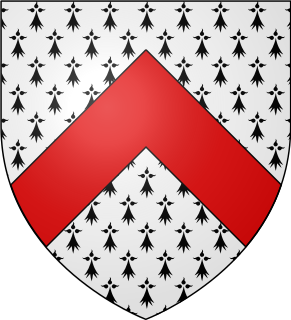 W
WJames Tuchet, 7th Baron Audley was the only lord to fully join the Cornish Rebellion of 1497 opposing the rule of Henry VII of England. He was a leader in the rebel army's march to the edge of London, and in its defeat at the Battle of Deptford Bridge. Captured on the battlefield, he was sentenced for treason and beheaded. His peerage was forfeited, but restored to his son in 1512.
 W
WAnne Boleyn was Queen of England from 1533 to 1536, as the second wife of King Henry VIII. The circumstances of her marriage and of her execution by beheading for treason and other charges made her a key figure in the political and religious upheaval that marked the start of the English Reformation. Anne was the daughter of Thomas Boleyn, 1st Earl of Wiltshire, and his wife, Lady Elizabeth Howard, and was educated in the Netherlands and France, largely as a maid of honour to Queen Claude of France. Anne returned to England in early 1522, to marry her Irish cousin James Butler, 9th Earl of Ormond; the marriage plans were broken off, and instead she secured a post at court as maid of honour to Henry VIII's wife, Catherine of Aragon.
 W
WEdward Stafford, 3rd Duke of Buckingham was an English nobleman. He was the son of Henry Stafford, 2nd Duke of Buckingham, and Katherine Woodville, and nephew of Elizabeth Woodville and King Edward IV. Thus Edward Stafford was a first cousin once removed of King Henry VIII. He was convicted of treason and executed on 17 May 1521.
 W
WSir Nicholas Carew KG, of Beddington in Surrey, was an English courtier and diplomat during the reign of King Henry VIII. He was executed for his alleged part in the Exeter Conspiracy.
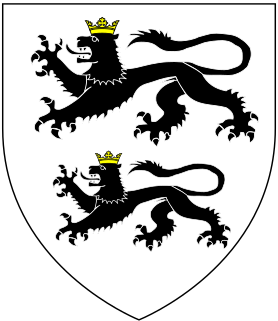 W
WWilliam Catesby was one of Richard III of England's principal councillors. He also served as Chancellor of the Exchequer and Speaker of the House of Commons during Richard's reign.
 W
WThomas Cromwell, 1st Earl of Essex, was an English lawyer and statesman who served as chief minister to King Henry VIII from 1534 to 1540, when he was beheaded on orders of the king.
 W
WThomas Darcy, 1st Baron Darcy of Darcy or of Temple Hurst, was an English nobleman, the only son, and heir, of Sir William Darcy and his wife, Euphemia Langton, the daughter of Sir John Langton. Darcy was opposed to the Dissolution of the Monasteries, and for his role in the Pilgrimage of Grace was convicted of high treason for delivering up Pontefract Castle to the rebels. He was executed on Tower Hill 30 June 1537.
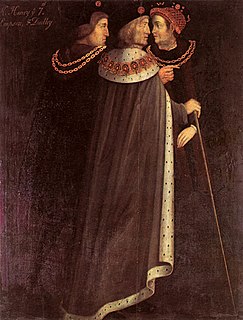 W
WEdmund Dudley was an English administrator and a financial agent of King Henry VII. He served as a leading member of the Council Learned in the Law, Speaker of the House of Commons and President of the King's Council. After the accession of Henry VIII, he was imprisoned in the Tower of London and executed the next year on a treason charge. While waiting for his execution he wrote The Tree of Commonwealth. Edmund Dudley was also the grandfather of Robert Dudley, 1st Earl of Leicester, a favourite of Henry VIII's daughter, Elizabeth I.
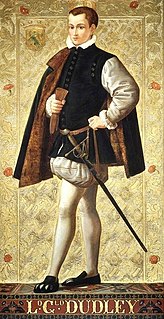 W
WLord Guildford Dudley was an English nobleman who was married to Lady Jane Grey. King Edward VI had declared her his heir, and she occupied the English throne from 10 July until 19 July 1553. Guildford Dudley had a humanist education and was married to Jane in a magnificent celebration about six weeks before the King's death. After Guildford's father, the Duke of Northumberland, had engineered Jane's accession, Jane and Guildford spent her brief rule residing in the Tower of London. They were still in the Tower when their regime collapsed and they remained there, in different quarters, as prisoners. They were condemned to death for high treason in November 1553. Queen Mary I was inclined to spare their lives, but Thomas Wyatt's rebellion against Mary's plans to marry Philip of Spain led to the young couple's execution, a measure that was widely seen as unduly harsh.
 W
WSir Richard Empson, minister of Henry VII, was a son of Peter Empson. Educated as a lawyer, he soon attained considerable success in his profession, and in 1491 was a Knight of the shire for Northamptonshire in Parliament, and Speaker of the House of Commons.
 W
WRobert Devereux, 2nd Earl of Essex, KG, PC was an English nobleman and a favourite of Queen Elizabeth I. Politically ambitious, and a committed general, he was placed under house arrest following a poor campaign in Ireland during the Nine Years' War in 1599. In 1601, he led an abortive coup d'état against the government of Elizabeth I and was executed for treason.
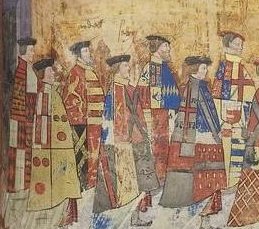 W
WHenry Courtenay, 1st Marquess of Exeter, 2nd Earl of Devon, KG, PC, feudal baron of Okehampton, feudal baron of Plympton, of Tiverton Castle, Okehampton Castle and Colcombe Castle all in Devon, was a grandson of King Edward IV, nephew of the queen consort, Elizabeth of York and a first cousin of King Henry VIII. Henry Courtenay was a close friend of Henry VIII's, having "been brought up of a child with his grace in his chamber."
 W
WJohn Fisher was an English Catholic bishop, cardinal, and theologian. Fisher was also an academic and Chancellor of the University of Cambridge. He was canonized by Pope Pius XI.
 W
WSir Adrian Fortescue was a courtier at the court of King Henry VIII of England who was executed in 1539 and later beatified as a Roman Catholic martyr.
 W
WLady Jane Grey, later known as Lady Jane Dudley and as the "Nine Days' Queen", was an English noblewoman who claimed the throne of England and Ireland as Jane I from 10 July until 19 July 1553.
 W
WCatherine Howard, also spelled Katherine Howard, was Queen of England from 1540 until 1541 as the fifth wife of Henry VIII. She was the daughter of Lord Edmund Howard and Joyce Culpeper, cousin to Anne Boleyn, and niece to Thomas Howard, 3rd Duke of Norfolk. Thomas Howard was a prominent politician at Henry's court, and he secured her a place in the household of Henry's fourth wife, Anne of Cleves, where she caught the King's interest. She married him on 28 July 1540 at Oatlands Palace in Surrey, just 19 days after the annulment of his marriage to Anne. He was 49, and she was about 17 years old.
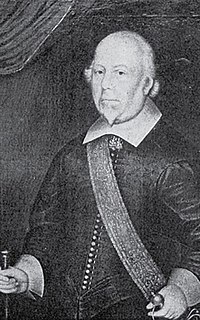 W
WJohn Hussey, 1st Baron Hussey of Sleaford was Chief Butler of England from 1521 until his death. He was a member of the House of Lords, and a Chamberlain to King Henry VIII's daughter, Mary I of England.
 W
WMary, Queen of Scots, also known as Mary Stuart or Mary I of Scotland, reigned over Scotland from 14 December 1542 until her forced abdication on 24 July 1567.
 W
WSir Thomas More, venerated in the Catholic Church as Saint Thomas More, was an English lawyer, judge, social philosopher, author, statesman, and noted Renaissance humanist. He also served Henry VIII as Lord High Chancellor of England from October 1529 to May 1532. He wrote Utopia, published in 1516, which describes the political system of an imaginary island state.
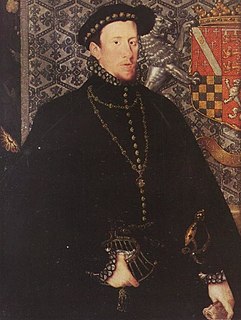 W
WThomas Howard, 4th Duke of Norfolk, was an English nobleman and politician. Although from a family with strong Catholic leanings, he was raised a Protestant. He was a second cousin of Queen Elizabeth I through her maternal grandmother, and held many high offices during her reign.
 W
WJohn Dudley, 1st Duke of Northumberland was an English general, admiral, and politician, who led the government of the young King Edward VI from 1550 until 1553, and unsuccessfully tried to install Lady Jane Grey on the English throne after the King's death. The son of Edmund Dudley, a minister of Henry VII executed by Henry VIII, John Dudley became the ward of Sir Edward Guildford at the age of seven. Dudley grew up in Guildford's household together with his future wife, Guildford's daughter Jane, with whom he was to have 13 children. Dudley served as Vice-Admiral and Lord Admiral from 1537 until 1547, during which time he set novel standards of navy organisation and was an innovative commander at sea. He also developed a strong interest in overseas exploration. Dudley took part in the 1544 campaigns in Scotland and France and was one of Henry VIII's intimates in the last years of the reign. He was also a leader of the religious reform party at court.
 W
WThomas Percy, 7th Earl of Northumberland, 1st Baron Percy, KG, led the Rising of the North and was executed for treason. He was later beatified by the Catholic Church.
 W
WSir Thomas Palmer was an English soldier and courtier. His testimony was crucial in the final downfall of Edward Seymour, 1st Duke of Somerset in 1551–1552. Palmer was executed for his support of Lady Jane Grey in the succession crisis of 1553.
 W
WGeorge Boleyn, Viscount Rochford was an English courtier and nobleman who played a prominent role in the politics of the early 1530s, and was the brother of Queen Anne Boleyn, from 1533 the second wife of King Henry VIII and thus the maternal uncle of Queen Elizabeth I. Following his father's promotion in the peerage in 1529 to Earl of Wiltshire and Earl of Ormond, he adopted his father's junior title Viscount Rochford as a courtesy title. He was accused of incest with his sister Anne during the period of her trial for high treason, as a result of which both were executed.
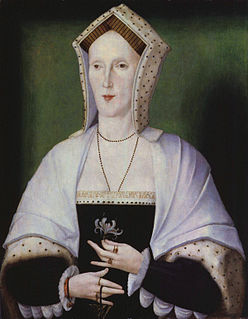 W
WMargaret Pole, Countess of Salisbury was the daughter of George, Duke of Clarence, and Isabel Neville and was niece of kings Edward IV and Richard III. Margaret was one of two women in 16th-century England to be a peeress in her own right with no titled husband. One of the few surviving members of the Plantagenet dynasty after the Wars of the Roses, she was executed in 1541 at the command of Henry VIII, who was the son of her first cousin Elizabeth of York. Pope Leo XIII beatified her as a martyr for the Catholic Church on 29 December 1886.
 W
WThomas Seymour, 1st Baron Seymour of Sudeley, KG PC was a brother of Jane Seymour, the third wife of King Henry VIII. With his brother, Edward Seymour, 1st Duke of Somerset and Lord Protector of England, he vied for control of their nephew, the young King Edward VI. In 1547 Seymour became the fourth husband of Catherine Parr, who had been the sixth and last wife and queen of Henry VIII. During his marriage to Catherine Parr, Seymour involved the future Queen Elizabeth I, who resided in his household, in flirtatious and possibly sexual behaviour.
 W
WEdward Seymour, 1st Duke of Somerset PC, also known as Edward Semel, was the eldest surviving brother of Queen Jane Seymour (d. 1537), the third wife of King Henry VIII. He was Lord Protector of England from 1547 to 1549 during the minority of his nephew King Edward VI (1547–1553). Despite his popularity with the common people, his policies often angered the gentry and he was overthrown.
 W
WSir Michael Stanhope of Shelford in Nottinghamshire, was an influential courtier who was beheaded on Tower Hill, having been convicted of conspiring to assassinate John Dudley, 1st Duke of Northumberland, and others.
 W
WSir William Stanley KG was an English soldier and the younger brother of Thomas Stanley, 1st Earl of Derby. Stanley fought with his troops in several battles of the Wars of the Roses.
 W
WHenry Grey, 1st Duke of Suffolk, 3rd Marquess of Dorset, was an English courtier and nobleman of the Tudor period. He was the father of Lady Jane Grey, known as "the Nine Days' Queen".
 W
WHenry Howard, Earl of Surrey, KG, was an English nobleman, politician and poet. He was one of the founders of English Renaissance poetry and was the last known person executed at the instance of King Henry VIII. He was a first cousin of both Queen Anne Boleyn and Queen Catherine Howard, second and fifth wives of King Henry VIII. His name is usually associated in literature with that of the poet Sir Thomas Wyatt. He was the son of Thomas Howard, Earl of Surrey and when his father became Duke of Norfolk (1524) the son adopted the courtesy title of Earl of Surrey. Owing largely to the powerful position of his father, Howard took a prominent part in the court life of the time, and served as a soldier both in France and Scotland. He was a man of reckless temper, which involved him in many quarrels, and finally brought upon him the wrath of the ageing and embittered Henry VIII. He was arrested, tried for treason and beheaded on Tower Hill.
 W
WWilliam Thomas, a Welshman from Llanigon, Brecknockshire, was a scholar of Italian and Italian history and a clerk of the Privy Council under Edward VI. Thomas was executed for treason after the collapse of Wyatt's Rebellion under Mary I.
 W
WEdward Plantagenet, 17th Earl of Warwick was the son of Isabel Neville and George Plantagenet, 1st Duke of Clarence, and a potential claimant to the English throne during the reigns of both his uncle, Richard III (1483–1485), and Richard's usurper, Henry VII (1485–1509). He was also a younger brother of Margaret Pole, 8th Countess of Salisbury. Edward was tried and executed for treason in 1499.
 W
WSir Francis Weston KB was a gentleman of the Privy Chamber at the court of King Henry VIII of England. He became a friend of the king but was later accused of high treason and adultery with Anne Boleyn, the king's second wife. Weston was condemned to death, together with George Boleyn, Viscount Rochford, Henry Norris, William Brereton and Mark Smeaton. They were all executed on 17 May 1536, two days before Anne Boleyn suffered a similar fate.
 W
WSir Thomas Wyatt the Younger was an English politician and rebel leader during the reign of Queen Mary I; his rising is traditionally called "Wyatt's rebellion". He was the son of the English poet and ambassador Sir Thomas Wyatt.